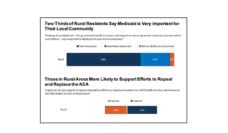US health care is remarkable. We spend 2.5 times as much per person as the average rich democracy. We fail to protect all people against health care costs. We die younger. What explains this triple failure? How can we do better?
US health spending is high because it is not constrained by either market competition or competent government action. Why not?
First, because a free market does not and cannot function in health care. That’s because not one of the six key conditions for market competition is attainable in health care. (The six are lots of small buyers and sellers, independent suppliers and sovereign consumers, easy entry, good information about price and quality, prices that track costs, and generalized mistrust.) Those who promote what they call market methods of containing cost therefore unintentionally or deliberately enable continued cost growth.
Second, because effective government action to limit health costs is paralyzed politically. Those who benefit from higher health spending—drug makers, hospitals, doctors, other caregivers, insurers, and others—are much more powerful than those seeking to contain spending.
Third, very few Americans know that our health spending is fully five times as high as defense spending. Or that health care’s share of US economic growth rose from one-tenth in the 1960s and 1970s to one-quarter during the past two decades. Americans are unaware of high costs in part because we pay for care in such fragmented ways. We don’t see one huge price tag. Instead, we spend out-of-pocket, through Medicare payroll taxes, through federal income taxes and state taxes for Medicaid, and through private insurance.
Nor do we pay enough attention to other sources of high costs which include unusually high administrative waste, high caregiver prices, outright theft, unnecessary care, shortages of primary care, and over-reliance on fragmented specialty physician care and on high-cost teaching hospitals. Together, it’s possible that up to one-half of the $3.9 trillion we spend on health care is wasted. This can also be seen as a great source of optimism—today’s health care spending is probably already adequate to finance the care that works for the people who need it.
US health care is remarkable. We spend 2.5 times as much per person as the average rich democracy. We fail to protect all people against health care costs. We die younger.
Since all of that money is already available inside health care, it will probably be easier politically to spend it better on behalf of better medical care for all Americans than to try to wrestle it out of the hands of doctors, hospitals, 15 million health care workers, and other caregivers. Also, by blocking medical care from sponging up excessive shares of economic growth, health care cost controls will liberate very substantial dollars.
How might that happen? Medicare for All and other single payer reforms are attractive and straightforward ways to cover everyone that also promise to contain cost. I’d vote for that in a heartbeat. But many others wouldn’t. Hospitals, doctors, and drug makers fear reduced revenue and disruption. Ordinary people fear higher taxes. In 2019, private insurance is expected to finance $1,278 billion (33.4%) of national health expenditures. Substituting income tax revenue for this money would raise personal income taxes by 75%.
One way to win the coverage and cost benefits of Medicare for All while placating some of its political opponents would be to insure all Americans immediately but to phase in higher public financing gradually. That could be done by allowing states to pool Medicare, Medicaid, and other public health dollars spent in their state, along with private insurance dollars. Employers, employees, and individuals would be obliged to continue to pay insurance premiums or pay a tax equal to premiums. But these premiums would be frozen in the dollars of 2019. All increases in health care spending would be financed only through higher public payments. Public and private dollars would be pooled and employed to back insurance coverage for all state residents.
Containing costs and assuring medical security (having confidence that a person who’s ill or injured will receive appropriate, effective, competent, speedy, and kind care—without high out-of-pocket payments or fear of bankruptcy), will demonstrate government’s competence to address problems that had been thought intractable. This will build support for further public actions to improve health. Those actions should include financing improved job training, environmental protection, boosting housing supply to lower cost of housing, nutrition, transportation, and other investments that will help boost Americans’ health—and also our economic and social well-being.
Inevitably, each of us will work in the area we believe to be more strategic or important, and also more fertile for cultivating progress. But together, it will be valuable to pursue a balance of efforts to fix health care and to address non-medical influences on health and well-being.
Photo by Elena Koycheva on Unsplash














